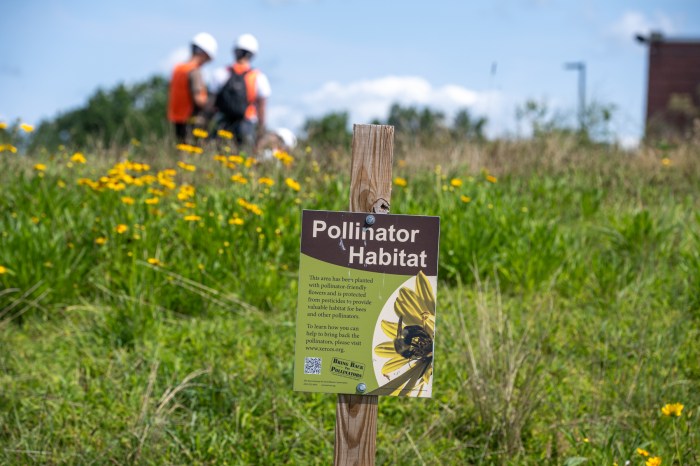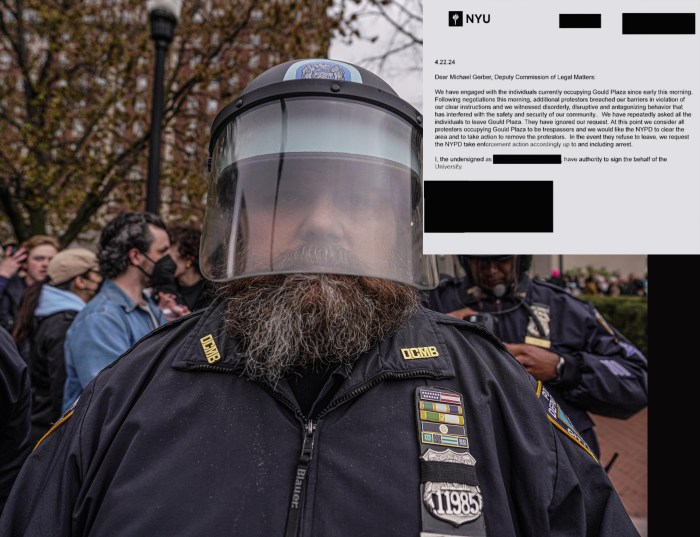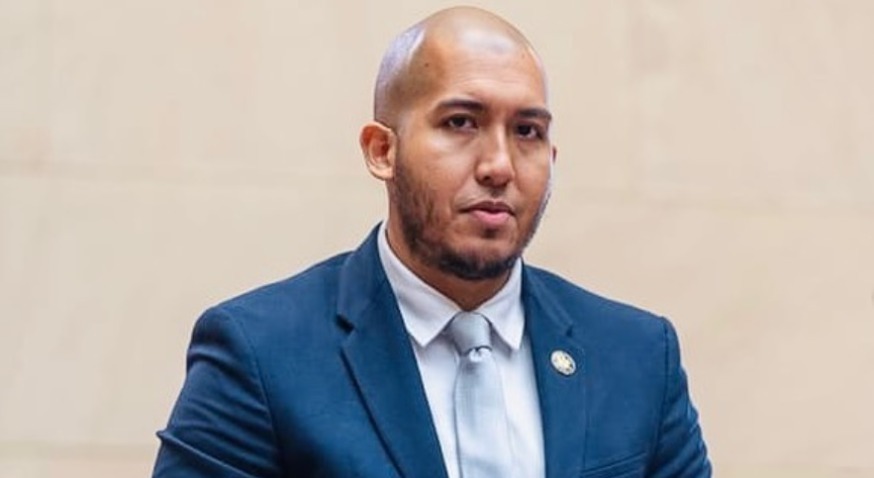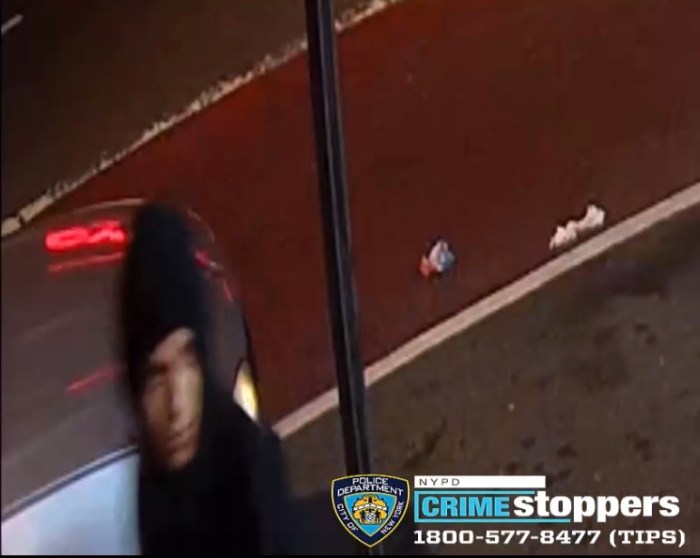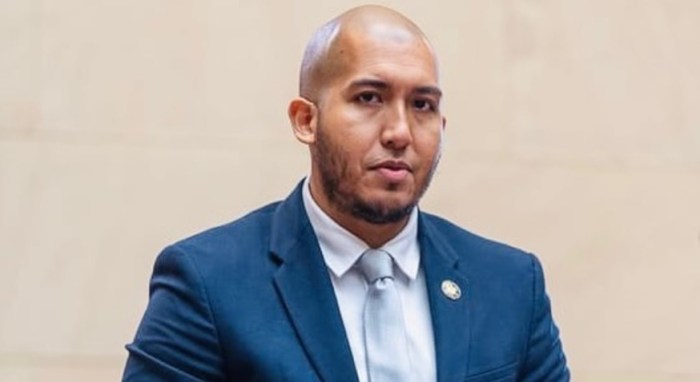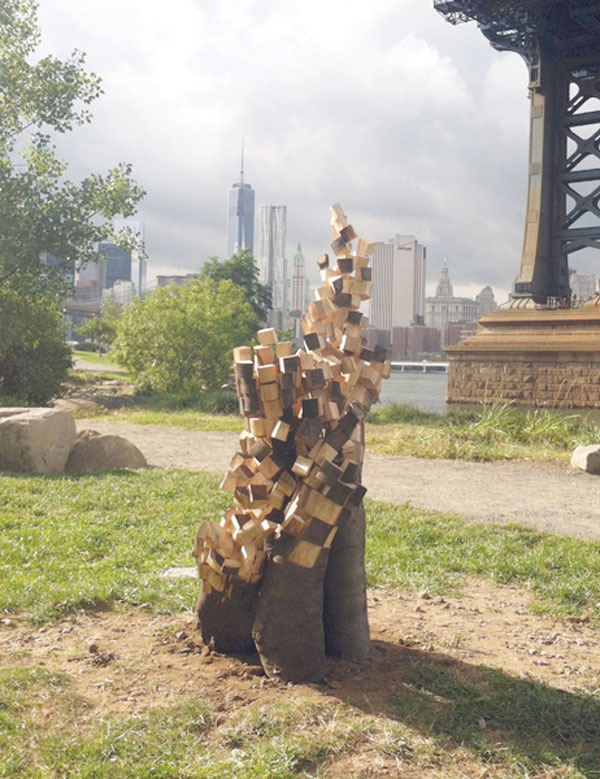
BY PASHA FARMANARA | Father Fagan Park, at Prince St. and Sixth Ave., will soon be home to artist Anthony Heinz May’s third sculpture in New York City, “Disangeopia.”
“Disangeopia” is an arch-like structure constructed with pixel-shaped pieces of wood, with two tree trunks holding the structure to the ground.
A major theme of “Disangeopia” is the role of technology in our society, symbolizing the trend of substituting live experiences with technological shortcuts.
“We have ostracized nature for the artificial more and more,” May said. “We can sit at home and go to the Louvre from your couch, then go to a forest in the same five minutes. It almost marginalizes the true physical experience of doing those things. I think that’s dangerous.”
This project uses wood from trees knocked down by Superstorm Sandy. May was able to get in touch with the Parks Department’s Manhattan forestry division, which collected around 1,000 trees brought down by Superstorm Sandy. Their annual average is around 50 to 70 trees a year.
May originally planned to build the sculpture on site, but due to issues with insurance he was forced to relocate the construction to his studio in Queens. Even though the process didn’t go as planned, the setback has proved useful.
“While doing it at the studio, everything is within arm’s reach,” he noted. “You don’t have to have an unrealistic thousand-yard cord in order to plug in an electric drill, because everything is right there. It’s funny because at one point it seemed like the great cloud, but then there’s the lining.”
“Disangeopia” has one unique characteristic unseen in May’s previous works: two tree trunks. His sculptures up till now have been based on a single trunk, and adding this extra component adds a new dynamic to his work.
“The idea of using multiple trees brings with it new problems to solve, new ways of arranging, new ways of bringing things together,” he said.
May hopes that his piece allows “people to look and reflect upon themselves the choices they make and their immediate surrounding and really their soul for existence.”
Going forward, May plans to be a part of a cultural art exchange with Canada. He was one of three artists selected to travel to Quebec at the beginning on the new year.
May plans to finish his piece at his Queens studio, and have it installed at Father Fagan Park by the end of the first week of December.










